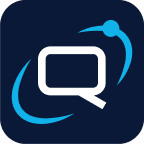Accessing Application Logs
Quant Cloud provides a powerful centralized logging interface that aggregates logs from all containers within your environment. This comprehensive log viewer is essential for debugging issues, monitoring application behavior, tracking events, and maintaining operational visibility across your entire application stack.
Accessing the Log Viewer
Section titled “Accessing the Log Viewer”Navigation Access your environment’s logs through the environment details page. The log viewer provides a dedicated interface for browsing, filtering, and analyzing log output from your application containers.
Container Selection Choose which containers to monitor using the container selection dropdown:
- All Containers: View aggregated logs from all containers in the environment
- Specific Container: Focus on logs from individual containers (e.g.,
php,site, or other named containers)
This flexibility allows you to either get a comprehensive view of your entire application stack or drill down into specific service logs for targeted troubleshooting.
Filtering and Search Capabilities
Section titled “Filtering and Search Capabilities”Text-Based Filtering Use the text filter to search for specific content within your logs:
- Enter keywords, error messages, or specific identifiers
- Filter results show only log lines containing your search terms
- Useful for finding specific errors, user actions, or system events
Time Range Selection Control the temporal scope of your log analysis:
- Start Time: Set the beginning of your log search window
- End Time: Define the end of your search period
- Date/Time Pickers: Use intuitive date and time selection controls
- Flexible Ranges: Search across minutes, hours, days, or custom periods
Result Limiting Manage log output volume with result limits:
- Configurable Limit: Set maximum number of log entries to retrieve (default: 100)
- Performance Optimization: Prevents overwhelming the interface with excessive log data
- Adjustable Range: Increase limits for comprehensive analysis or decrease for focused review
Filter Application
- Apply Button: Execute your filter criteria to refresh the log display
- Real-time Updates: See filtered results immediately after applying criteria
- Clear Filters: Reset all filters to return to default recent log view
Log Display and Format
Section titled “Log Display and Format”Display Interface Logs are presented in a clean, readable format with:
- Dark Background: Optimized for extended reading and reduced eye strain
- Monospaced Font: Ensures consistent formatting and alignment
- Scrollable Area: Navigate through large volumes of log data efficiently
- Syntax Highlighting: Color-coded elements for better readability
Log Entry Structure Each log entry typically contains:
- Timestamp: Precise date and time when the event occurred
- Log Level: Severity indicators (INFO, ERROR, WARN, DEBUG) when available
- Container Context: Source container identification for multi-container environments
- Message Content: The actual log message with relevant application data
- Metadata: Additional context such as request IDs, user information, or system identifiers
Empty State Handling When no logs match your current filter criteria, the interface displays a clear “No log entries found” message, helping you understand whether to adjust your search parameters or if no relevant activity occurred during the specified time period.
Effective Log Analysis Strategies
Section titled “Effective Log Analysis Strategies”Debugging Workflows
- Error Investigation: Filter by error keywords to identify and track down issues
- Performance Analysis: Search for slow query indicators or timeout messages
- User Activity Tracking: Filter by user IDs or session identifiers to follow user journeys
- Deployment Verification: Monitor logs during and after deployments to ensure successful rollouts
Monitoring Best Practices
- Regular Review: Periodically check logs for warnings or unusual patterns
- Error Pattern Recognition: Look for recurring issues that might indicate systemic problems
- Performance Correlation: Compare log timestamps with metrics data to understand performance impacts
- Security Monitoring: Watch for suspicious activities, failed authentication attempts, or unusual access patterns
Troubleshooting Techniques
- Time-based Analysis: Focus on specific time windows when issues were reported
- Container Isolation: Use container-specific filtering to isolate problems to specific services
- Keyword Searches: Use specific error codes, function names, or user identifiers to narrow down issues
- Pattern Analysis: Look for sequences of events that lead to problems
The centralized logging interface provides powerful tools for maintaining operational visibility, debugging issues, and understanding your application’s behavior across all environments and containers.
